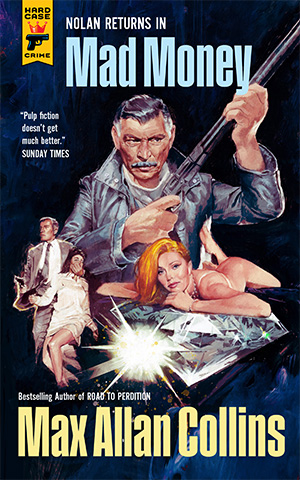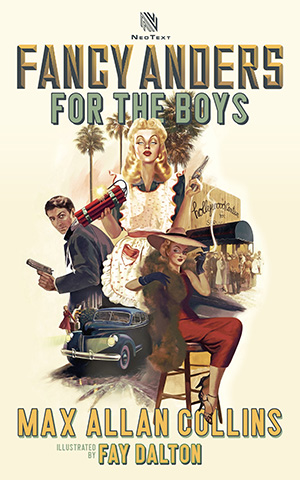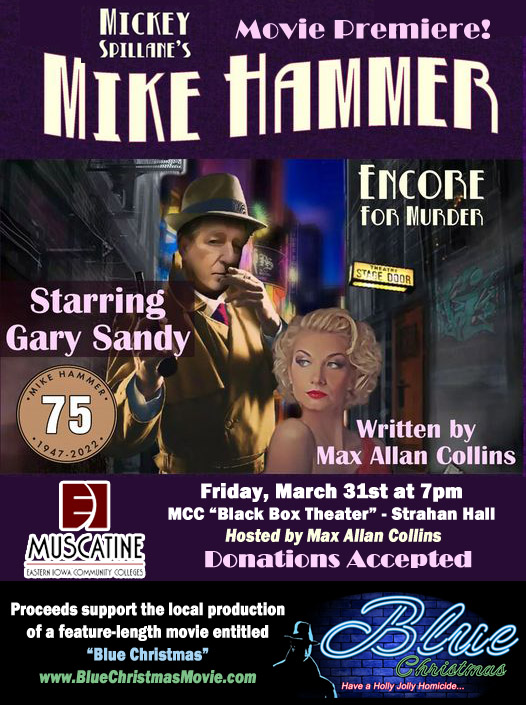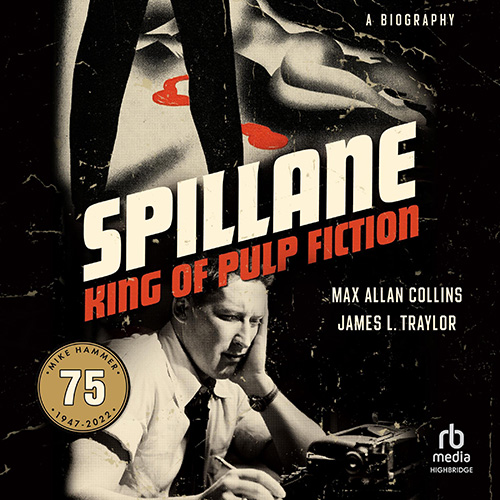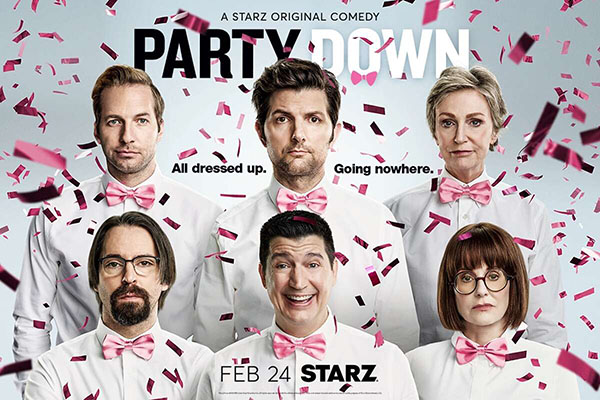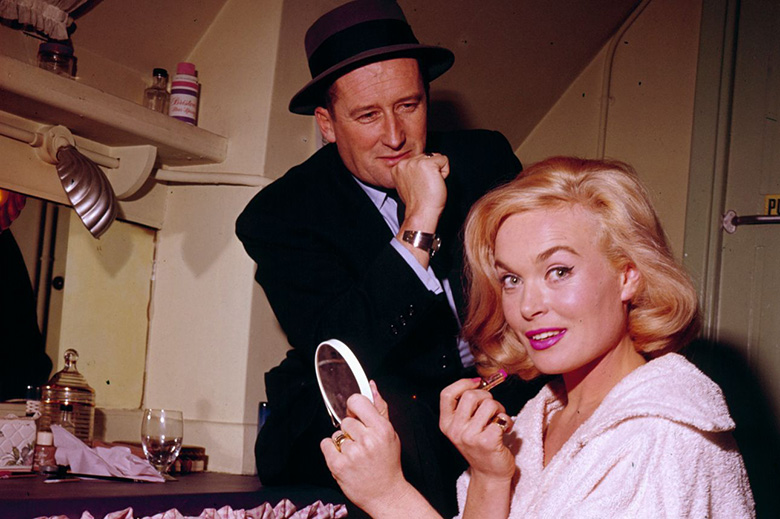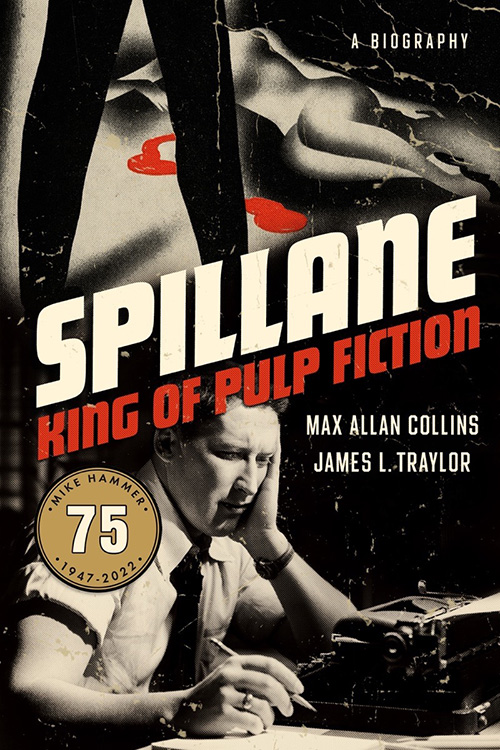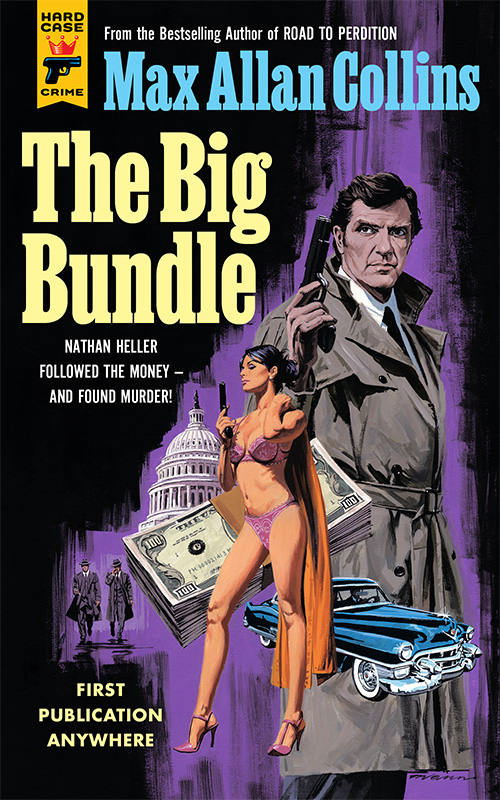[Nate here with a quick plug before this week’s update: VJ Books, home to the world’s largest selection of signed books, is featuring M.A.C. for the month of April with a 50% off sale. Check it out below!]
Most of the honorees to date among Muscatine Community College’s Legends have been pillars of the community, including a former dean and major industrialists, and certainly no other writers of sex-and-violence thrillers. How is this to be explained?
Here are the words writer Robert Towne put into the mouth of John Huston as Noah Cross in Chinatown: “Politicians, ugly buildings, and whores all get respectable if they last long enough.”
That may explain it.
I attended Muscatine Community College from 1966 through 1968. My father taught choral music there in the 1950s. I took classes at MCC throughout my senior year of high school and racked up a good number of credits, and had the pleasure (and honor) of being taught and mentored by Keith Larsen, poet and gentleman farmer, who has a building named after him at MCC. So I had affection for the community college before I made the decision to turn down a bunch of writing and even football (I’d have been killed) scholarships, influenced by my desire to keep my band the Daybreakers together. I’d formed the combo my senior year of high school and wanted to stick with it for a while. No idea the Daybreakers would morph into Crusin’ and I’d still be at in 2023.
I taught Freshman English and classes in both literature and creative writing at MCC during the first five years of my so-called adult life. My last semester at the Writers Workshop at the University of Iowa in Iowa City coincided with me teaching half-time at MCC, which over those five years would expand to full time and then (as my fiction writing career got off the ground) recede back into half-time.
But my roots with MCC are deep, and in that fashion at least my becoming “Legendary” there makes at least a little sense. I should mention that Barb not only attended MCC – where the two of us got together, after knowing each other since childhood – and got her four year-degree there from an extension program offered by Iowa Wesleyan College (now, unfortunately, facing a shut-down). She was also on the scholarship board for MCC and as far as I am concerned is every bit as legendary as yours truly.
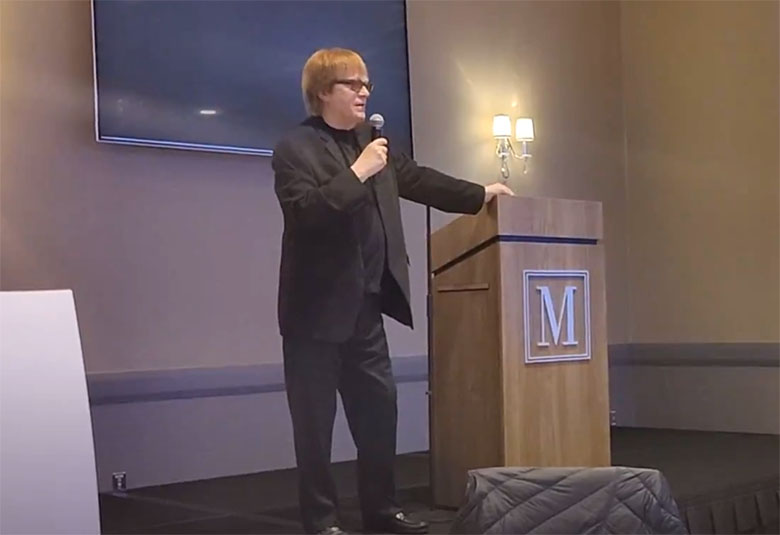
The evening celebrating my new legendary status – last Thursday, March 30, at the Merrill Hotel – was pleasant and fun, and never embarrassing. Friends like Matt and Pam Clemens were there, as were bandmates Bill Anson (guitarist) and Steve Kundel (drummer). I’d gone anticipating seeing a lot of my parents’ friends, but few were in attendance, having (like my folks) long since passed away. So a lot of the faces were as unfamiliar as they were friendly.
Our number one fan – Stephen Borer, who is blushing even as he reads this – made an unannounced trip from St. Paul, Minnesota (!), to attend the event. He sat with us at the Collins family table, where son Nate, his bride Abby, and our two incredibly smart grandchildren – Sam, 7, and Lucy, 4 – were also seated. Those two kids sat through a long evening, surprisingly interested in the proceedings and even (mostly) paying attention to the documentary about their grandfather. (Sam noticeably gasped when some violent pages from Lone Wolf and Cub were displayed in the doc as having influenced Road to Perdition.) My wife’s wonderful aunt Helen, herself an MCC legend in tandem with her husband, the late Stan Howe (a great friend of my father’s), sat with son Jim with Barb splitting time between the two tables.

M.A.C. and Stephen Borer
We gave away 130 copies of various M.A.C. and Barbara Allan books, and I signed quite a few after the dinner, which was provided by more than half a dozen local restaurants. The main event was an excellent half-hour documentary about my life and work. Before you dismiss my positive reaction as having mostly to do with my approving of the subject matter, I have to say Naomi DeWinter (president of MCC) and the college’s media guru Chad Bishop did an incredible job pulling the disparate elements of my creative life together into a cohesive whole.
I hope to have a link, before long, to this documentary, as some of you may wish to give it a look.
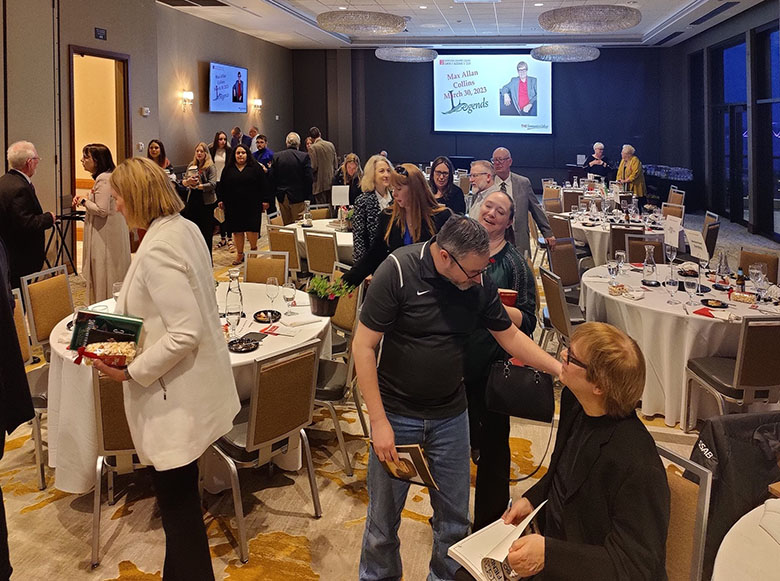
We also, rather casually, let it be known that the aforementioned Chad Bishop – who was the on-stage foley artist, among much else, on Mickey Spillane’s Encore for Murder – has enlisted me to do a project at MCC…specifically a production of Blue Christmas, long a favorite unrealized project of mine.
You may have read a little about that here already, but I’ll recap. Blue Christmas is a proposed film version of my novella, “A Wreath for Marley,” which might be described as a mash-up of The Maltese Falcon and A Christmas Carol. I thought I’d hung up my indie filmmaking spurs (or maybe megaphone and jodphurs) after a long effort to get Road to Purgatory made followed by my descent into health problems, most dramatically open-heart surgery. But then the Encore for Murder experience – staging it as a play and then shooting it as a film (or video production or however it might best be described) – got my juices flowing again.
(NOTE: The screening of Encore for Murder at the MCC Black Box Theater has been moved to May 5. Inclement weather caused the postponement, although the success of the Hawkeye girls in the Final Four was also a factor.)
We are already in serious pre-production with Blue Christmas, and have applied for several grants – one particularly key – that require us to come up with matching funds. Some of that can be “in kind” (i.e., I don’t get paid) but some has to be actual, you know, money. So we have launched an Indiegogo campaign to raise those funds. See my video pitch below.
I’ll be talking about this more over the coming weeks and months. But if you can kick in a few bucks – maybe enough to make it into the credits with a producing credit – that would be much, much appreciated.
By the way, if you’re never read “A Wreath for Marley,” it’s in a book entitled (not surprisingly) Blue Christmas from Wolfpack. And it’s available right here.
Speaking of Wolfpack, they have Barb’s (and my) great collection of short stories, Too Many Tomcats, on sale for 99-cents right now. Don’t dismiss this as a “cat” book – Barb (and I) mostly write about cats who are either killed or are themselves killers.
Amazon has a deal worth noting, too. Starting April 1 and running through April 30 Fate of the Union by Matt Clemens and me is $2.99 on e-book.
Sadly, we have come to the end of the Max Allan Collins Film Festival, held annually during March, my birthday month. Here are last week’s selections:
12. Super Troopers. Okay, they can’t all be Vertigo or Chinatown. Sometimes they just have to be dumb fun, and this movie is the most dumb fun to be had in one place, and it is a refreshing look at Brian Cox before Succession, which I like…just not as much as Super Troopers. A few years ago the Broken Lizard comedy team (who put this film together) appeared in Iowa City at the Englert Theater. Barb and I got to meet them after the performance and they were unfailingly nice and fun.
13. The Magnificent Seven. Barb requested a western and I quickly served this one up. Never get tired of it. Never get tired of seeing all these stars either at their peak or on the cusp of greater things. Never get tired of watching Steve McQueen upstage Yul Brynner, and Yul Brynner entertainingly retaliating. Then there’s Eli Wallach, whose performance here – really, the whole movie – paves the way for The Good, The Bad and The Ugly.
14. Les Vacances de Monsieur Hulot. Another Barb request – I wanted to wait till June 1 for this one, when summer was getting started, but when a lovely blonde requests a screening of one of the greatest comedies ever made, who am I to argue? Not a knee slapper (like The Producers for example), Hulot is all gentle comedy, observational humor, and pleasing sight gags. It always feels like you’ve been on vacation after viewing it.
15. Start the Revolution Without Me. This is one of the three truly outstanding funny performances from Gene Wilder (the others being the aforementioned Producers and Young Frankenstein). The first half of this film is hilarious – a take on The Corsican Brothers specifically and swashbuckling films in general – but the second half devolves into farcical blackouts, which are also hilarious but intermittently. Look, the movie is a mess. But what a wonderful, sublime mess, from the greatest comedy team who ever made only one movie together: Gene Wilder and Donald Sutherland. “As we say in Corsica — goodbye!”
16. Hour of the Gun. Another western – James Garner as Wyatt Earp and Jason Robards as Doc Holliday in what was then the most accurate retelling of the O.K. Corral shoot-out (and the subsequent “vendetta ride”) to date. It’s still the best, and a grim shock to the system for Garner fans raised on the wry Maverick. The second western from director John Sturges this week (Magnificent Seven being the other).
17. The Time Machine. George Pal’s charmingly dated yet timeless special effects and a narrative that rests comfortably on the broad shoulders of Rod Taylor are enough. But the surprisingly moving story of a man unstuck in time, who falls in love with Yvette Mimieux without quite knowing it, retains its emotional impact with an action-packed climax that holds up (Taylor doing almost all of his stunts). This sports a terrific supporting performance from Alan Young, who deserved better than Mr. Ed, and a mesmerizing score with a haunting theme by Russell Garcia.
Thus ends this year’s Max Allan Collins Film Festival. What, no Gun Crazy? No Kiss Me Deadly? What about The Great Race? No Anatomy of a Murder? There’s always next year….
Peter Davis at The Washington Times has been very kind to Spillane – King of Pulp Fiction. Here is his interview with my co-author, James L. Traylor.
The Big Bundle is briefly but intelligently discussed on this podcast.
Finally, fifteen comic-book murder mysteries are recommended here, and Road to Perdition is one of them.
M.A.C.

